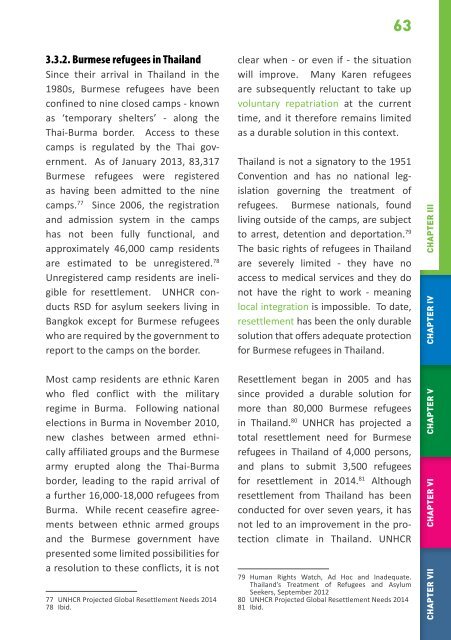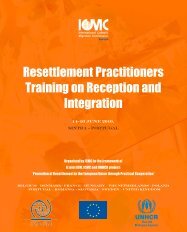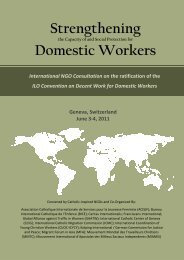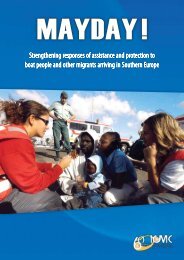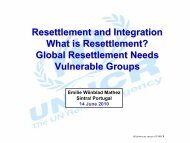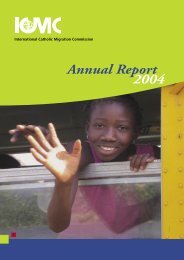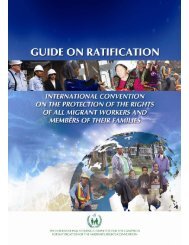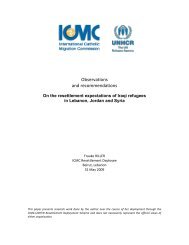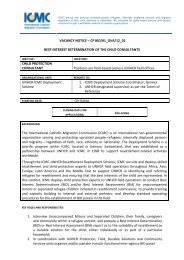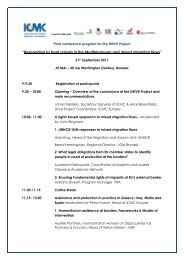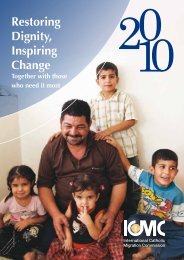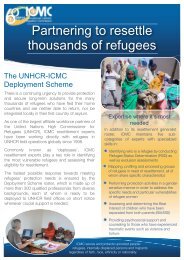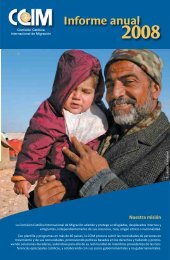ICMCEUROPE WelcometoEurope.pdf (5.89 MB)
ICMCEUROPE WelcometoEurope.pdf (5.89 MB)
ICMCEUROPE WelcometoEurope.pdf (5.89 MB)
You also want an ePaper? Increase the reach of your titles
YUMPU automatically turns print PDFs into web optimized ePapers that Google loves.
63<br />
3.3.2. Burmese refugees in Thailand<br />
Since their arrival in Thailand in the<br />
1980s, Burmese refugees have been<br />
confined to nine closed camps - known<br />
as ‘temporary shelters’ - along the<br />
Thai-Burma border. Access to these<br />
camps is regulated by the Thai government.<br />
As of January 2013, 83,317<br />
Burmese refugees were registered<br />
as having been admitted to the nine<br />
camps. 77 Since 2006, the registration<br />
and admission system in the camps<br />
has not been fully functional, and<br />
approximately 46,000 camp residents<br />
are estimated to be unregistered. 78<br />
Unregistered camp residents are ineligible<br />
for resettlement. UNHCR conducts<br />
RSD for asylum seekers living in<br />
Bangkok except for Burmese refugees<br />
who are required by the government to<br />
report to the camps on the border.<br />
Most camp residents are ethnic Karen<br />
who fled conflict with the military<br />
regime in Burma. Following national<br />
elections in Burma in November 2010,<br />
new clashes between armed ethnically<br />
affiliated groups and the Burmese<br />
army erupted along the Thai-Burma<br />
border, leading to the rapid arrival of<br />
a further 16,000-18,000 refugees from<br />
Burma. While recent ceasefire agreements<br />
between ethnic armed groups<br />
and the Burmese government have<br />
presented some limited possibilities for<br />
a resolution to these conflicts, it is not<br />
77 UNHCR Projected Global Resettlement Needs 2014<br />
78 Ibid.<br />
clear when - or even if - the situation<br />
will improve. Many Karen refugees<br />
are subsequently reluctant to take up<br />
voluntary repatriation at the current<br />
time, and it therefore remains limited<br />
as a durable solution in this context.<br />
Thailand is not a signatory to the 1951<br />
Convention and has no national legislation<br />
governing the treatment of<br />
refugees. Burmese nationals, found<br />
living outside of the camps, are subject<br />
to arrest, detention and deportation. 79<br />
The basic rights of refugees in Thailand<br />
are severely limited - they have no<br />
access to medical services and they do<br />
not have the right to work - meaning<br />
local integration is impossible. To date,<br />
resettlement has been the only durable<br />
solution that offers adequate protection<br />
for Burmese refugees in Thailand.<br />
Resettlement began in 2005 and has<br />
since provided a durable solution for<br />
more than 80,000 Burmese refugees<br />
in Thailand. 80 UNHCR has projected a<br />
total resettlement need for Burmese<br />
refugees in Thailand of 4,000 persons,<br />
and plans to submit 3,500 refugees<br />
for resettlement in 2014. 81 Although<br />
resettlement from Thailand has been<br />
conducted for over seven years, it has<br />
not led to an improvement in the protection<br />
climate in Thailand. UNHCR<br />
79 Human Rights Watch, Ad Hoc and Inadequate.<br />
Thailand’s Treatment of Refugees and Asylum<br />
Seekers, September 2012<br />
80 UNHCR Projected Global Resettlement Needs 2014<br />
81 Ibid.<br />
CHAPTER VI CHAPTER V<br />
CHAPTER IV<br />
CHAPTER III<br />
CHAPTER VII


